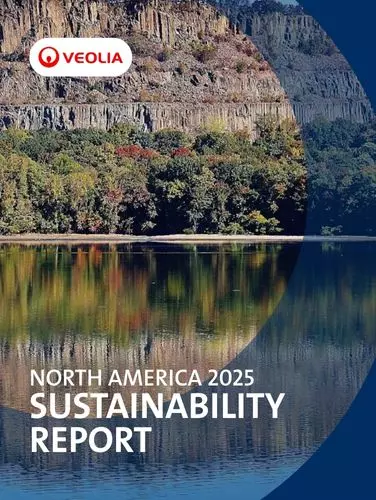Veolia Group is a world leader in decarbonizing, reducing pollution and conserving and regenerating resources.
Performance Metrics
Metric | Description | UN Sustainable Development Goal | 2023 North America Result | 2024 North America Target | 2024 North America Result |
Scope 1 and 2 GHG Emissions | % reduction in GHG emissions versus prior year | 13: Climate Action | New for 2024 | ≥ 5% | 5% |
Decarbonization | CAPEX spent on decarbonization projects | 13: Climate Action | New for 2024 | ≥ $8M | $11M |
Biodiversity | Biodiversity action plan progress | 13. Climate Action | 82% | ≥ 50% including additional sites | 55% |
Sustainable Management of Water Resources | % efficiency of drinking water networks | 6. Clean Water and Sanitation | 76% | ≥ 80% | 84% |
Our Climate Commitment
In July 2024 the Science Based Targets initiative (SBTi) approved Veolia’s short-term emissions reduction targets for 2032 (50% reduction for scopes 1 and 2 and 30% reduction for at least 67% of scope 3 by 2032 compared to 2021) and recorded the Group’s commitment to reduce its long-term emissions to meet the target of zero net emissions by 2050. This commitment (Net Zero by 2050) is in line with the ambition of the 2015 Paris Climate Agreement, which aims to limit global warming to 1.5°C by the end of the century (IPCC SSP1-1.9 scenario).
Veolia’s transition plan has also obtained a NZ2 score according to Moody’s Net Zero Assessment (NZA). Following the methodological changes in the accounting of emissions (see above), the Group submitted its new trajectory to the SBTi in the first half of 2025. The Group’s commitments in terms of the percentage reduction of scopes 1, 2 and 3 by 2032 and 2050 remain unchanged.
Governance and Reduction Roadmap
Our decarbonization efforts are directed by a steering committee composed of leaders from strategy, technical, finance and business divisions. This committee leverages expertise from the global Veolia Group, maintains direct accountability to our regional CEO and strives to make principle-based decisions that reflect scientific accuracy and transparency.
We also improved the accuracy of our reported emissions by increasing the percentage of our reported emissions calculated based on observed stack data, rather than on estimates or emissions factors.
The steering team also refined and developed execution plans for the region’s scope 1 and 2 emissions reduction roadmap, which we will continue to implement in the coming years. Many of these efforts are underway; other projects such as carbon capture are being developed for later implementation.
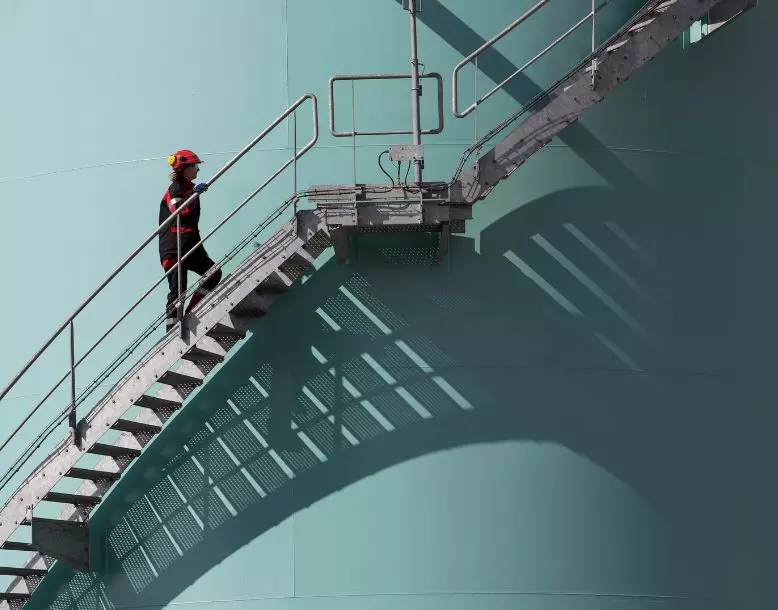
Three key pillars guide our current strategy and future focus:
Operational Efficiency and Employee Engagement
Renewable Energy
Carbon Capture
Scope 1 and 2 Greenhouse Gas Emissions
2024 marks the second year Veolia’s North America region is reporting its scope 1 and 2 emissions at the zone level, furthering its commitment to transparency and public accountability in our region. Veolia Group has quantified and reported global scope 1 and 2 greenhouse gas (GHG) emissions for decades.
One key methodology change made in 2024 by the Veolia Group was to clarify the definition of operational control for the sites we operate on behalf of clients. The sites we operate on a contract basis but do not own have been moved from scope 1 and 2 emissions to scope 3. With a commitment to methodology, accuracy and transparency, the decarbonization steering committee analyzed zone-level greenhouse gas emissions and reset our baseline as well. During 2024 we also completed the divestiture of our sulfuric acid regeneration business. The divestiture of these assets account for some of the reduction in our Scope 1 and 2 emissions in 2024.
As part of the scope 1 and 2 reduction roadmap, a scope 2 renewable energy strategy was created in 2024 that supports the ongoing implementation of renewable energy projects at our sites, including the Arvin, California wastewater treatment plant and our Gum Springs, Arkansas facility.
Actual Scope 1 and 2 Emissions in Tons for 2023 and 2024
*2023 historical data recalculated to reflect updated definition of operational control adopted by Veolia Group in 2024

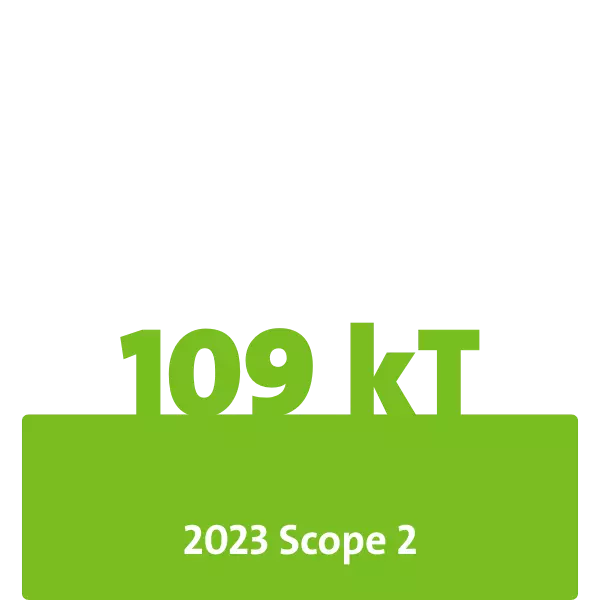
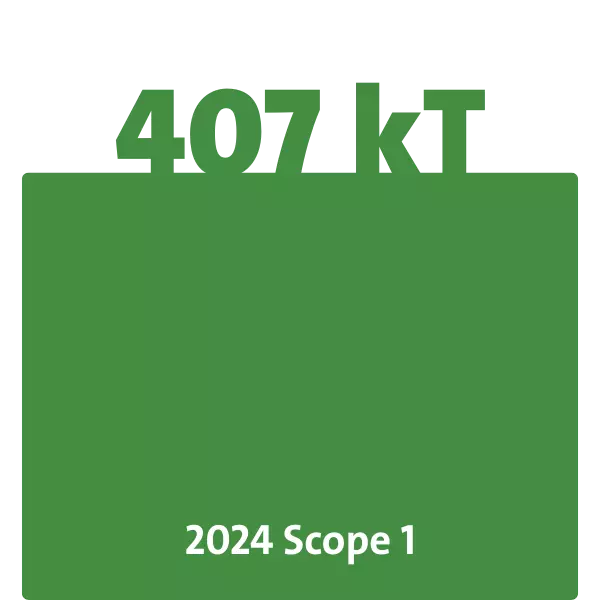

Scope 3 Greenhouse Gas Emissions: Indirect Emissions
Scope 3 emissions are included in Veolia Group’s global commitment to net zero emissions by 2050. Achieving this goal will require engagement across the value chain — from suppliers to transportation partners to customers.
While Veolia does not currently report scope 3 emissions on a regional level, we have identified priority reduction areas and developed programs to address them.

Scope 3, Category 1: Purchased Goods and Services
Through supplier engagement, education and reviews we are embedding sustainability as a key part of our procurement process, with an aim to reduce emissions from upstream supply.
Scope 3, Category 4: Upstream Transportation and Distribution
We have taken significant strides to substitute rail for truck transport when feasible and will continue that progress. A key enabler will be the start up of our new Gum Springs incinerator line, which will be served by rail. This will provide greater operational flexibility and help reduce inbound transportation emissions.
Scope 3, Category 6: Business Travel
The nature-based carbon reduction projects at our Gum Springs facility have been designated to address a portion of our company’s air and rail business travel.
Scope 3, Category 11: Use of Sold Products
With the refinement of our operational control boundary, our efforts to reduce emissions of our operations on contracted customer sites are now accounted for as scope 3 emissions improvements.
Scope 4 Greenhouse Gas Emissions: Avoided Emissions
Scope 4 emissions — or avoided emissions — were first proposed by the World Resources Institute in 2013. They represent the emissions savings that a business makes for other emissions not currently accounted for under scopes 1, 2 or 3. Scope 4 emissions reductions are included in the Our Customers section of this report. For environmental service companies, scope 4 emissions create a paradox. Their scope 1 and 2 emissions footprint may increase as they help clients reduce their emissions and create a net reduction in total emissions across an operation. This topic will become more relevant as the cost of carbon increases, and companies implement more expansive emissions reduction projects.
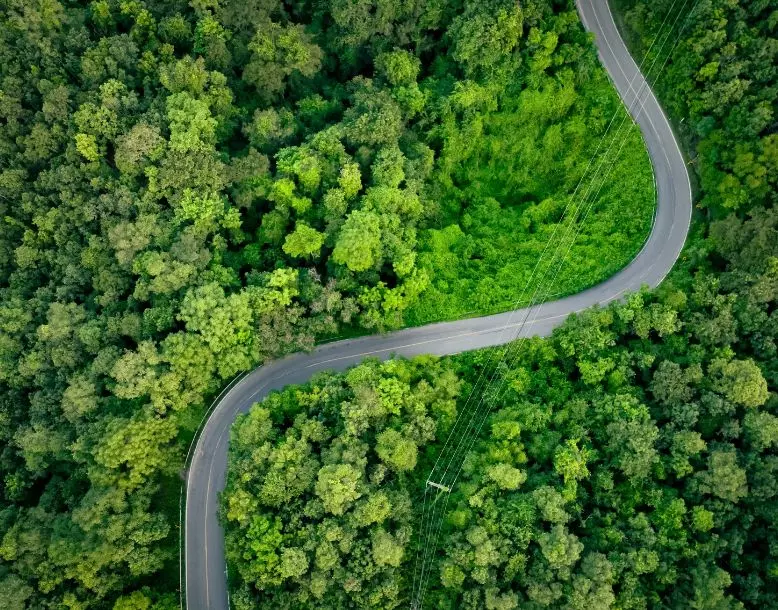
Globally, Veolia continues to advocate for a formal standard for scope 4 emissions reporting. Scope 4 emissions are essential to help us measure the impact we have for our customers through providing operations and maintenance services for their facilities.
Climate Risk Management and Adaptation
Our first priorities are decarbonizing our operations and helping our customers and supply chain partners decarbonize. In parallel, we must recognize that climate change can lead to physical risks such as flooding, droughts, heat waves, sea level rise, increased average temperatures, changes in seasonal precipitation patterns and chronic water stress. These risks may have consequences for our operations including service interruption, material damage to infrastructure and equipment, reduced service and treatment quality, higher operating costs and changes in working conditions.
Therefore, as part of our climate risk management strategy, we must anticipate and plan for the potential impacts of these physical risks through adaptation measures. This will enhance our site’s resiliency and ensure that our decarbonization efforts are complemented by robust adaptation strategies to mitigate the effects of climate change. We have carried out a first study at a site based on the Operational Climate Adaptation & Resilience Assessment (OCARA) framework developed by Carbone 4. Additional studies are planned. You can read more about our risk management process in the Financial section of this report.
We also recognize that climate change has the potential for greater impacts in disadvantaged and under-resourced communities. Through our engagement with organizations such as the National League of Cities and the Climate Mayors we strive to help all communities develop resilience and climate adaptation strategies, and prepare them for economic changes brought about by the energy transition.
Water Conservation
We are committed to water stewardship through an approach that combines efficient water management, forward-thinking growth strategies and innovative water reuse and recycling technologies. We’re not just conserving water today — we’re helping build resilient water systems for future generations.
In a landmark achievement for water conservation, our Regulated Water division saved 1.5 billion gallons of water over five years through advanced metering systems and cutting-edge leak detection technology.
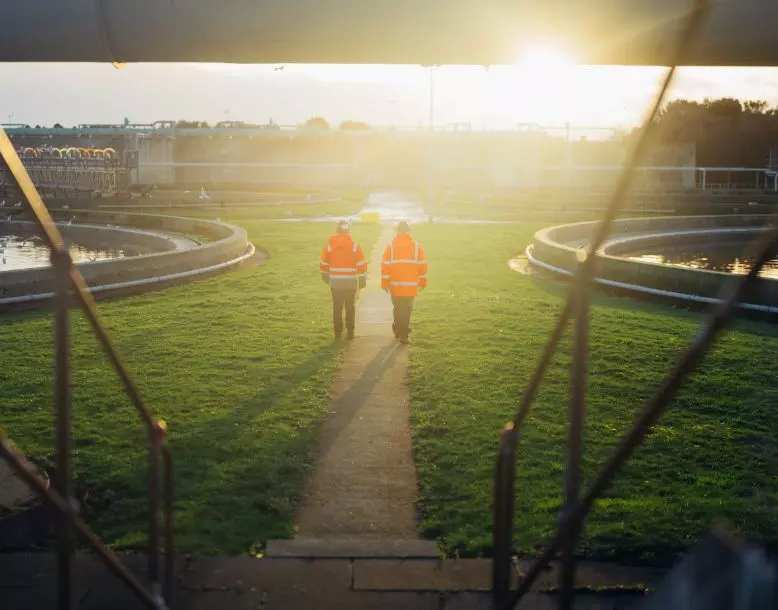
Biodiversity On Our Sites
Our ambitious biodiversity initiative now encompasses more than 90 sites through three integrated programs:
- Sensitive sites
- Implementation of ecological management practices
- Zero phytosanitary.
The sensitive sites program expanded significantly from nine to 17 key locations in 2024, where detailed assessments informed tailored action plans for species protection and habitat restoration.

For 2025 we established a comprehensive biodiversity framework with four interconnected objectives:
We aim to build community by fostering employee engagement and creating meaningful connections across our organization around biodiversity initiatives.
We’re focused on driving program stability through sustainable governance and resource allocation to ensure long-term impact.
We’re committed to delivering results on our multifaceted performance targets for sensitive sites while fulfilling our act4nature commitments regarding ecological management and zero phytosanitary practices.
We’re working to integrate biodiversity solutions into our commercial offerings, enabling our clients to enhance their own environmental performance.
Protecting Public Health and the Environment
We seek to meet and exceed all regulatory requirements for environmental performance through our robust environmental management system. Another important part of the company’s environmental system is the management and corrective action for high-risk incidents. The company’s management system emphasizes the importance of reporting and learning from potential incidents, as well as active incidents, using the Root Cause Failure Analysis (RCFA) methodology. During 2024, 73% of level 3 and higher incidents were analyzed with RCFAs, and corrective action recommendations were communicated across the region.




